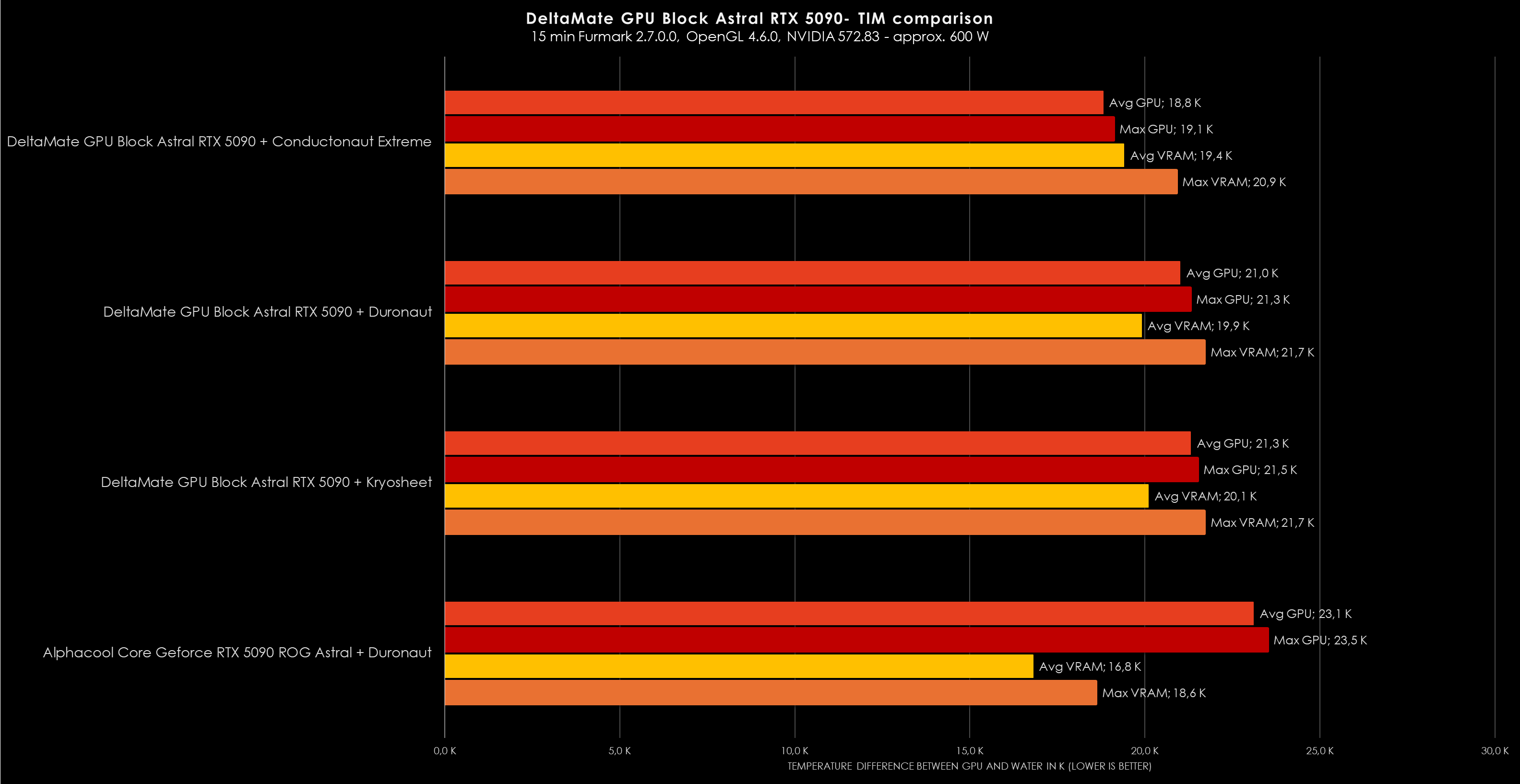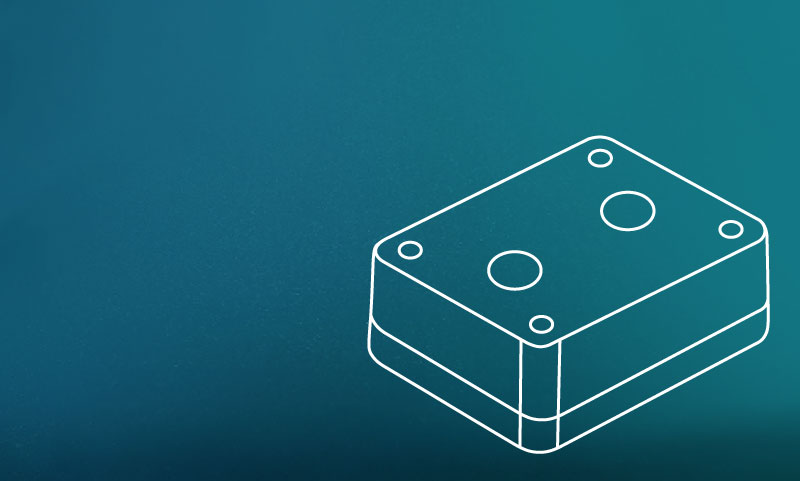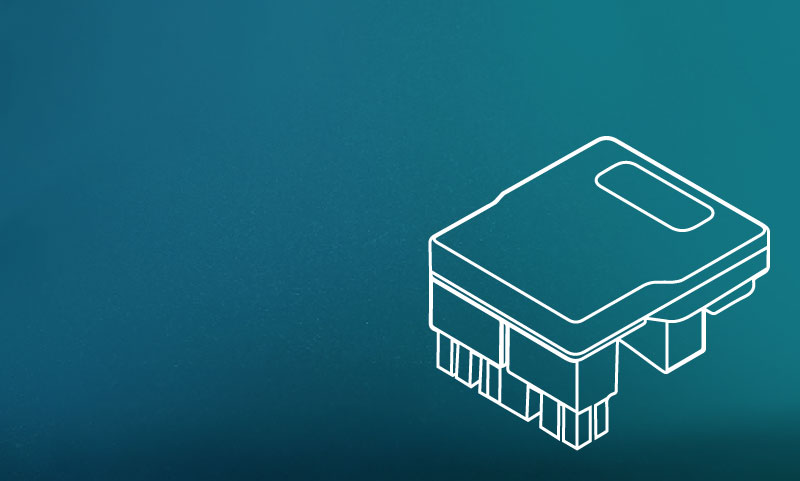The DeltaMate GPU Block - ROG Astral RTX 5090 Black comes pre-applied with Duronaut as the thermal interface material for the GPU (graphics processing unit). For even better thermal performance, liquid metal (LM) such as Conductonaut Extreme can be applied directly to the GPU. The newly developed TG GPU Guard is a custom foam gasket that prevents the liquid metal from spreading. Additionally, it blocks oxygen exposure to the liquid metal, thereby slowing down oxidation and prolonging the life of the LM.
Maximum cooling performance with liquid metal
To maintain GPU cooling as efficiently as possible, liquid metal (LM)—such as Conductonaut Extreme—can be used on the GPU die. Liquid metal can be applied in an extremely thin layer and fills even the smallest surface irregularities on both the GPU and the cooler. This further enhances the already excellent thermal conductivity of liquid metal, significantly improving heat transfer from the GPU to the cooler compared to traditional thermal paste.
The following chart shows the temperature delta (Delta T, ΔT) measured in Kelvin (K). In this context, Delta T refers to the difference between the GPU temperature and the coolant temperature in a custom loop. A smaller Delta T is better, as it indicates a more efficient thermal transfer from the GPU to the water block.

With Duronaut applied to the GPU (included in the package), the system shows an average Delta T of 21.0 K and a maximum Delta T of 21.3 K.
With Conductonaut Extreme applied, the average Delta T drops to 18.8 K, with a maximum of 19.4 K.
The difference between the average Delta T of Duronaut and Conductonaut Extreme is 2.2 K (which equals 2.2 °C), while the maximum Delta T differs by 1.9 K, both in favor of Conductonaut Extreme.
KryoSheet performs slightly worse than Duronaut, with an average Delta T of 21.3 K and a maximum Delta T of 21.5 K.
















